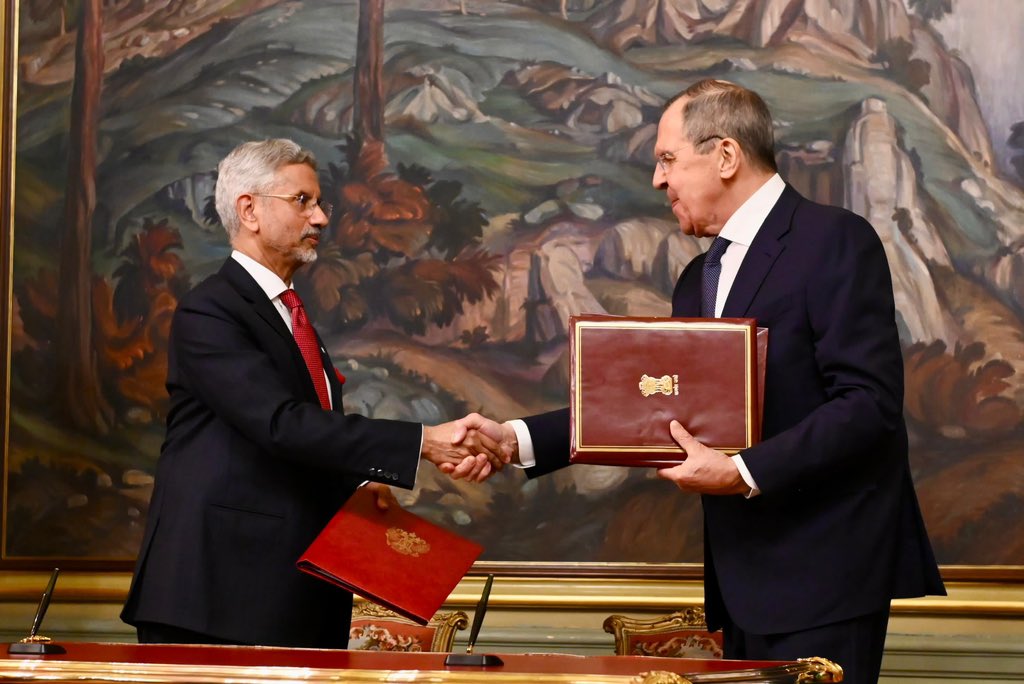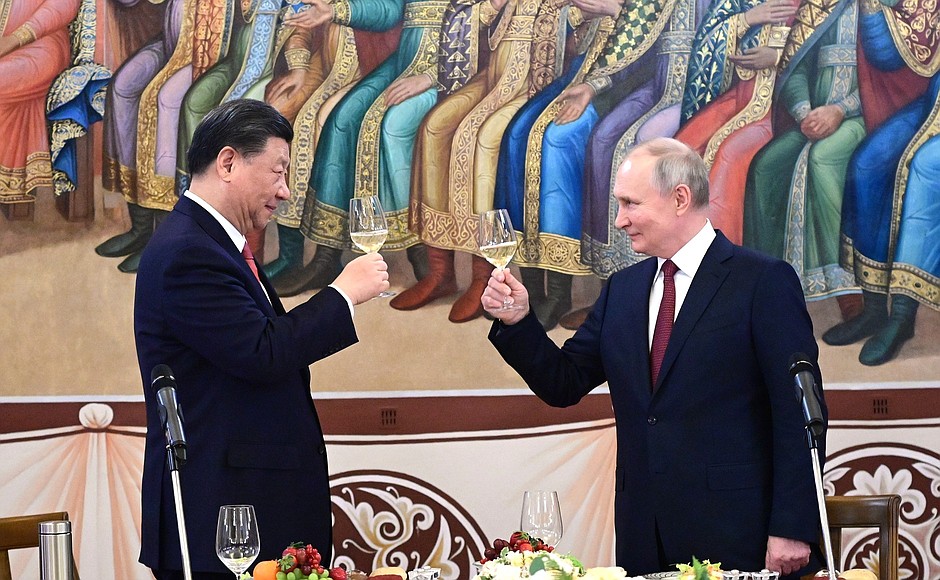
2024 needs to witness Moscow freeing itself from the chokehold of Beijing by increasing economic involvement with India, writes Prof. Madhav Das Nalapat
2024 needs to witness Moscow freeing itself from the chokehold of Beijing by increasing economic involvement with India.
During the visit to Moscow of External Affairs Minister S. Jaishankar, efforts were reportedly on from the Russian side to increase the joint production of defence items by the two countries. This would be an error. Given the configuration of players in what is now the Cold War 2.0 period, it is consumer goods such as shoes, textiles and other items that need to be produced in India by Russian investors. White goods such as refrigerators or washing machines could also be part of the menu, meeting the needs of Russian consumers.

Were defence items to be the main focus of investment by Russian entities of the rupees earned by the country through a surplus of trade with India, that surplus would only grow still more, to levels that are unsustainable. Emphasis where production by Russian businesses in India is concerned needs to be on items that are of use to consumers in Russia, so that the India-Russia trade balance becomes more balanced. Rather than increase further, the proportion of defence-related items in Indo-Russian trade needs to steadily get replaced with other items in the way that is taking place now. Rather than seek a return to the past, when that vast country was the USSR, what is needed by Russian leaders is to look to the future, and in the desirability of creating manufacturing opportunities in India that would enable Russia to lower its dependence on other countries for meeting several of its needs.
Although sought by NATO policy to be barred from western markets, items produced in India by Russian companies would find a market in the Global South in particular. By next year, the war in Ukraine that is increasingly being termed as “Biden’s Folly” will end in a manner unfavourable to Kiev. This need not have been the case. It was the US President together with then Prime Minister of the United Kingdom Boris Johnson who persuaded President Volodymyr Zelenskyy to reject the Kremlin’s March 2022 offer of an immediate halt to the hostilities that will soon be entering its second year of operations.

As mentioned earlier, Johnson’s motivation for seeking to continue the war was transparent. Under attack within his own party for repeatedly breaking Covis-19 rules that his own government had enforced, his view was that the Conservative Party would not remove a leader as deliberately seeming to be Churchillian as Boris Johnson. Sadly for him, they nevertheless did. In Biden’s case, the President of the US appears not to have been able to shake off the Cold War 1.0 way of thinking that marked his career in the US Senate.
In the case of Ukraine, Biden has acted as though in the 21st century it is still Moscow that is the primary threat to the US and not Beijing. The war in Ukraine has been a disaster not just for Ukraine, several parts of which look like present-day Gaza, but for other countries in Europe, especially Germany. If Chancellor Ludwig Erhard was the originator of the transformation from collapse into prosperity of the German economy, Chancellor Olaf Scholz has been its destroyer, by permitting without protest the shutting down of gas supplies from Russia through Nord Stream I and the sabotage of Nord Stream II by as yet unacknowledged Russophobes within NATO. Interestingly, it is Germany’s “liberal” Green Party that is the fiercest proponent of NATO’s prosecution of the Ukraine war, and it is the “right-wing” Alternative for Germany that opposes involvement in the war.
Given their interest in prolonging the Ukraine war and other diversionary flashpoints across the globe, the Greens in Germany must be favourites of the CCP leadership. As for Chancellor Scholz, he has pivoted away from the longtime external policies of the Social Democratic Party, evidence that he has been completely house-trained into an old-fashioned Cold War 1.0 conservative through his loyal apprenticeship under Chancellor Angela Merkel during the period when her Christian Democrats were the dominant party in government. Merkel kneecapped the prospects for her own party by allowing two million immigrants from societies that were not entirely congruent with the values and needs of Germany, to put it mildly. By her generous gesture, Merkel will enter the history books as the mother of indiscriminate immigration into Germany. Her party paid the price for expanding the population of Germany quickly and substantially through an infusion of vast numbers of migrants from entirely different cultures, and Scholz was the beneficiary, taking over as Chancellor in 2021.

Surprisingly for a Social Democratic Chancellor, he acted as a Cold War 1.0 warrior, adopting a soft line towards the PRC even as the CCP was working to ensure that China remained on track to replace Germany as the manufacturing hub of several sophisticated engineering products, including luxury automobiles and machinery. While several countries in Europe have paid a substantial price for the impulsive sanctions that were slapped on Russian individuals and exports since 2022, none has suffered as much as Germany, a country that is emerging as the “sick man of Europe” courtesy the policy errors made by Chancellor Scholz, who seems to be going by the Biden playbook as faithfully as postwar Japan responded to the cues received from US President Truman. The difference is that Truman’s guidance proved helpful in the rebuilding of Japan, whereas adoption of the Putinophobic line of President Biden is substantially harming German interests.
In the US and in most countries in Europe, the folly of driving Russia into the clutches of China is becoming more evident. The anger directed at India by the Ursula von der Leyens during the initial months of the Ukraine war has abated. 2024 needs to witness Moscow freeing itself from the chokehold of Beijing by increasing economic involvement with India. A rupee-rouble agreement is needed that results in the production within India of items unrelated to kinetic conflict but central to an improvement in the daily lives of the Russian people. The future of India-Russia trade is bright, but it needs to be in the civilian and not in the military field.
ALSO READ: Russian strikes hit three Ukrainian cities


